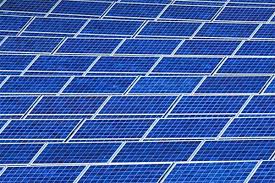Los Angeles, Feb 5: Scientists have developed a thin, flexible, lightweight material that can block thermal detection and absorb light from every angle to keep buildings and cars cool on hot summer days.
 The material, developed by engineers at the University of California San Diego in the US, is called a near-perfect broadband absorber.
The material, developed by engineers at the University of California San Diego in the US, is called a near-perfect broadband absorber.
It absorbs more than 87 per cent of near-infrared light (1,200 to 2,200 nanometre wavelengths), with 98 per cent absorption at 1,550 nanometres, the wavelength for fiber optic communication.
The material is capable of absorbing light from every angle. It also can theoretically be customised to absorb certain wavelengths of light while letting others pass through.
Materials that "perfectly" absorb light already exist, but they are bulky and can break when bent. They also cannot be controlled to absorb only a selected range of wavelengths, which is a disadvantage for certain applications.
Imagine if a window coating used for cooling not only blocked infrared radiation, but also normal light and radio waves that transmit television and radio programmes.
By developing a novel nanoparticle-based design, a team led by professors Zhaowei Liu and Donald Sirbuly at the UC San Diego has created a broadband absorber that is thin, flexible and tunable.
"This material offers broadband, yet selective absorption that could be tuned to distinct parts of the electromagnetic spectrum," said Liu.
The absorber relies on optical phenomena known as surface plasmon resonances, which are collective movements of free electrons that occur on the surface of metal nanoparticles upon interaction with certain wavelengths of light.
Metal nanoparticles can carry a lot of free electrons, so they exhibit strong surface plasmon resonance - but mainly in visible light, not in the infrared.
The researchers reasoned that if they could change the number of free electron carriers, they could tune the material's surface plasmon resonance to different wavelengths of light.
"Make this number lower, and we can push the plasmon resonance to the infrared. Make the number higher, with more electrons, and we can push the plasmon resonance to the ultraviolet region," said Sirbuly.
The problem with this approach is that it is difficult to do in metals. To address this challenge, engineers designed and built an absorber from materials that could be modified, or doped, to carry a different amount of free electrons: semiconductors.
Researchers used a semiconductor called zinc oxide, which has a moderate number of free electrons, and combined it with its metallic version, aluminium-doped zinc oxide, which houses a high number of free electrons — not as much as an actual metal, but enough to give it plasmonic properties in the infrared.
The study was published in the journal Proceedings of the National Academy of Sciences.





Comments
Add new comment